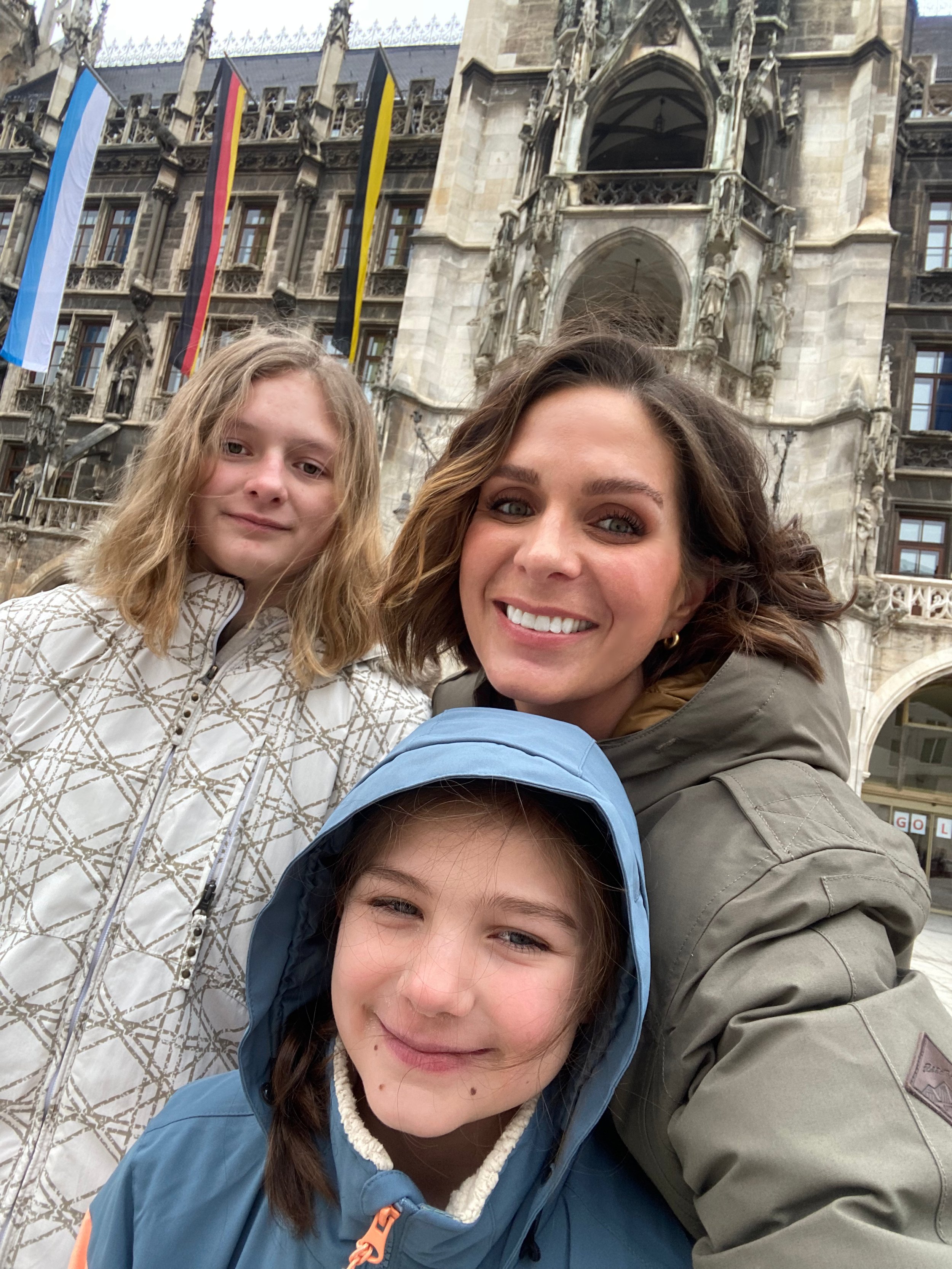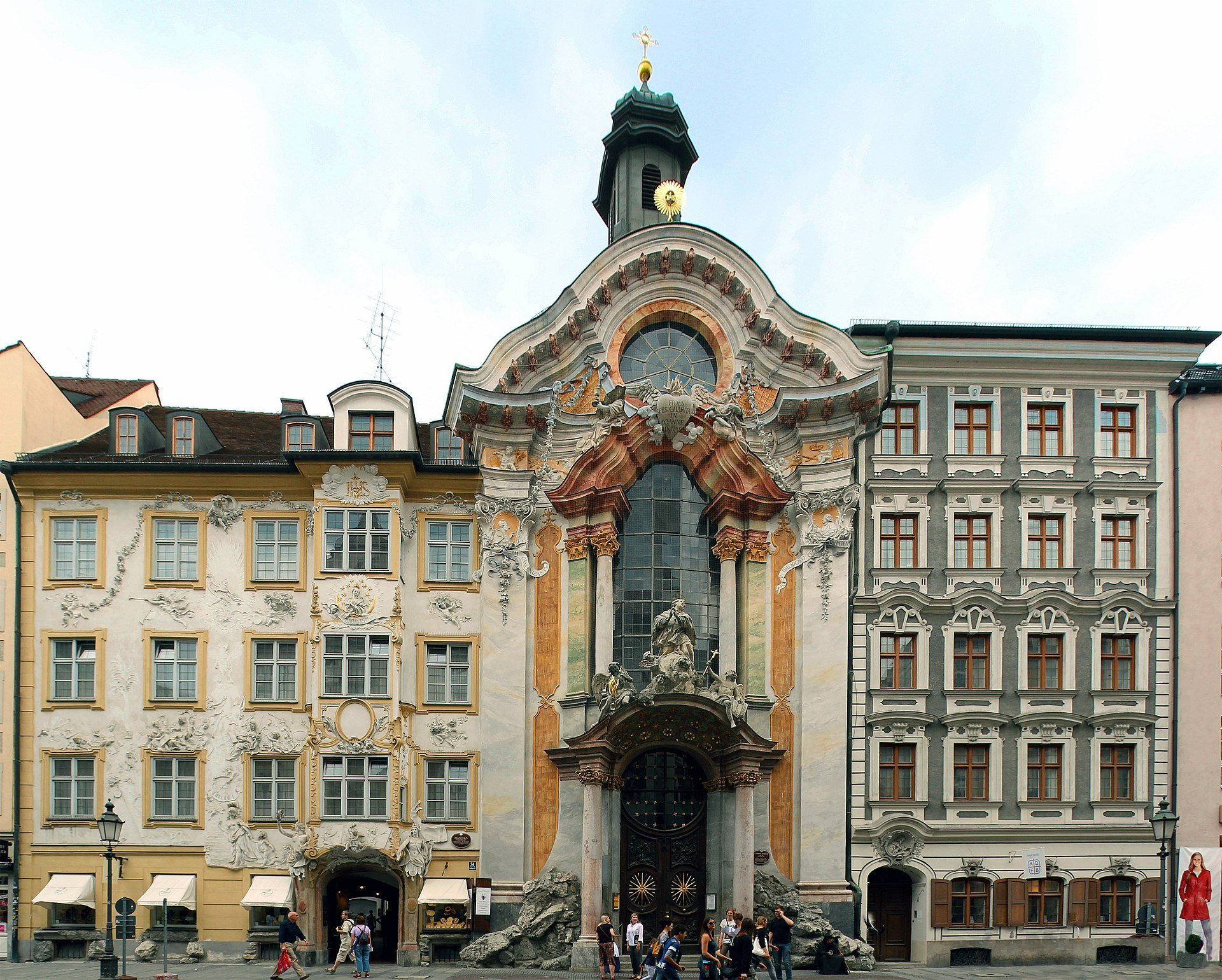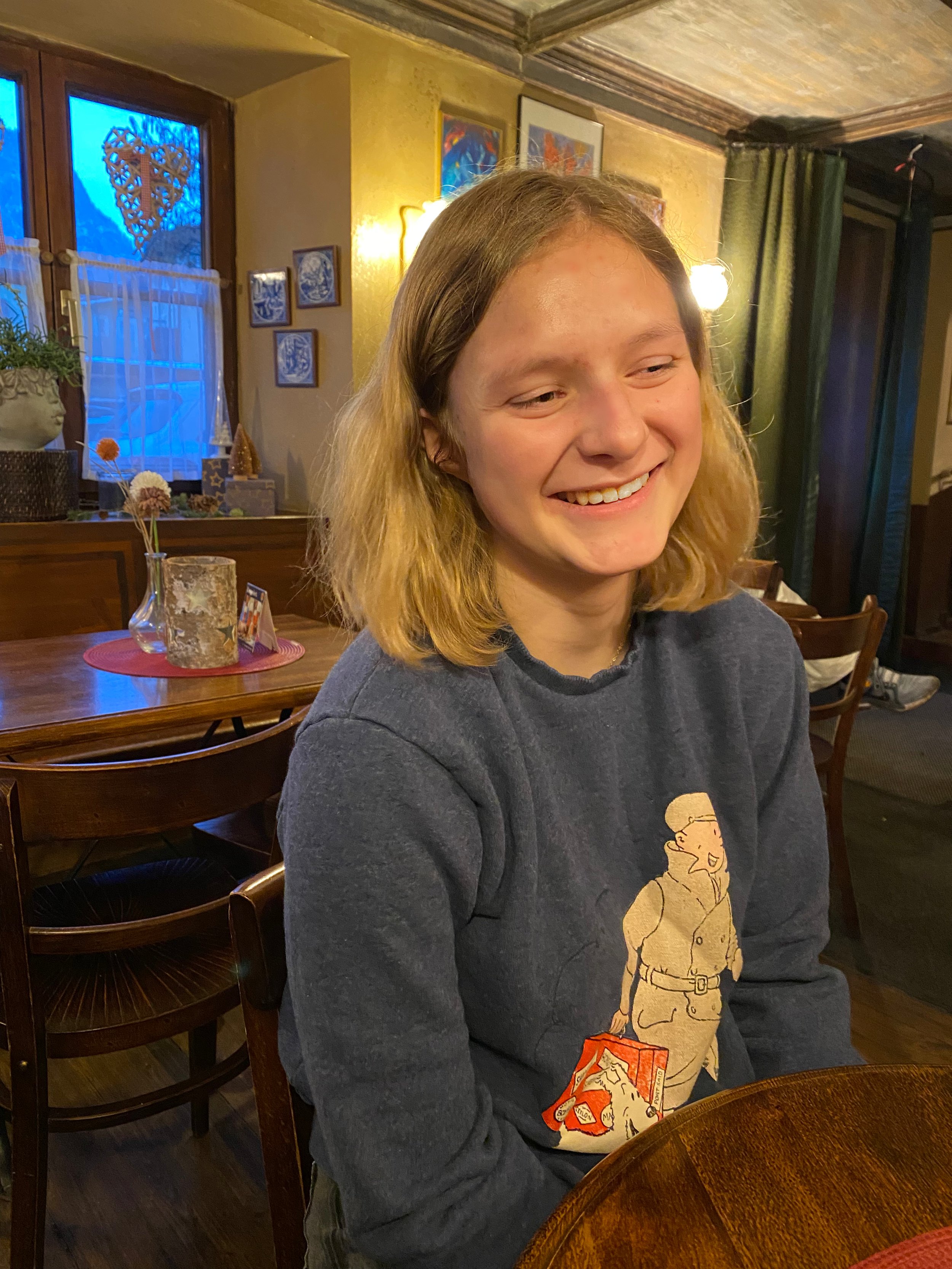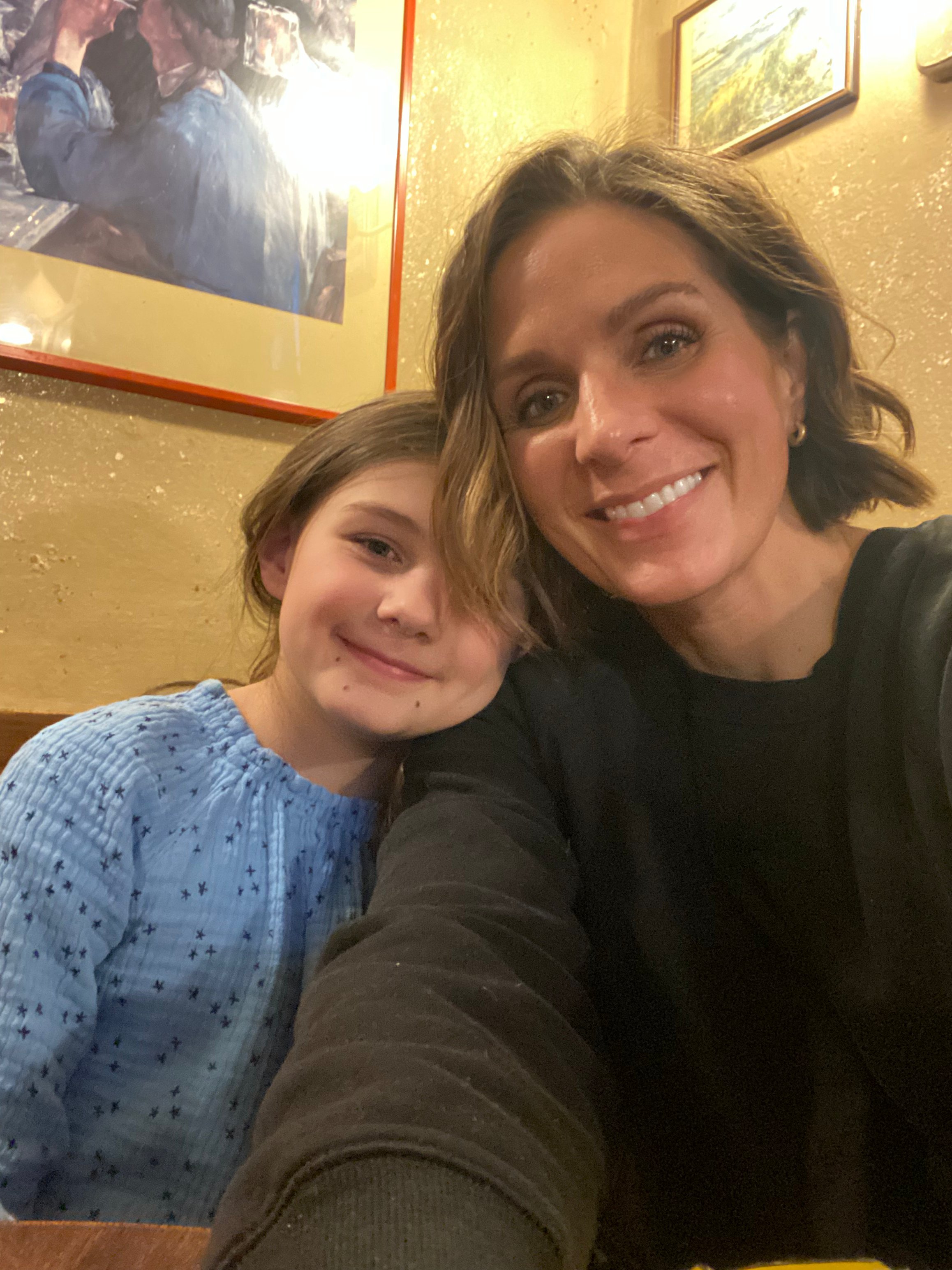Day Out: Munich
After our full day of skiing and night sledding in the Alps, we were exhausted. The following day was Sunday and I did a little digging to find out where The Church of Jesus Christ of Latter Day Saints would be meeting in the area so that we could attend. I assumed there would be a small English-speaking Branch (congregation) right there in Garmisch where we were staying, but I was wrong. The closest English Branch was an hour away in Munich. Emme was excited to see some of the places there because she has been learning a lot about Nazi Germany and some of the things that happened in Munich.
Whenever we go anywhere, the first resource I go to is Pinterest to find recommended itineraries and learn about places we might want to prioritize during our visit. I typed in “1 day Munich” and found lots of blog articles to look through with recommended sites, food, timelines, and hidden gems.
Then I went to the Komoot app on my phone. It’s free and allows you to search any location on a map and plan your path for the day. It shows all the landmarks and highlights and you can tap on the one where you want to start and stop, and then tap all the other sites you want to see. It will plan the route that makes the most sense so you don’t waste any time, and shows you the total distance and time estimate.This really helps! I will save my route and then refer to it as a guide during our time in a place. Oftentimes our plans change or adjust, but having my route with all the sites I really want to see is immensely helpful.
For Munich, we had a couple hours in the morning, then church, and then a few hours in the afternoon. We arrived midmorning on Sunday so there wasn’t any traffic and the underground parking right in the city center was empty which made it really easy.
First up, we made our way over to the Rathaus (townhall) to see the amazing Glockenspiel. It doesn’t run during the coldest months of January and February so we didn’t get to see it in action, but it was really amazing just to see. The bells of nearby St. Peter’s church and many others were ringing as it was time for Catholic Mass to begin.
From the Rathaus, we walked a short distance to Asamkirche just to see it. This church was designed and built between 1733-1746 as a private chapel by and for two brothers who were artists — one a painter and one a scupltor. Because it wasn’t a commissioned building, these Asam brothers built is in line with their ideas and preferences. For example, the one brother positioned the high altar so that he could see it through the window from his home opposite the church. They also designed it as a special confession church for youth so there are seven confession booths with allegorical scenes around the chapel. The church is truly a site to see! Mass had just begun when we arrived and there was a sign that said, “strictly no tourists during mass,” so we quietly walked in the door and stayed back in the entryway. I wanted my girls to hear and see what Catholic Mass was like. It was packed with those attending Mass which was special to see. It is such a small chapel and space, and the art was as elaborate as we expected. We stayed a few minutes and then quietly left to visit the Residenz.
The Residenz is the former royal palace of the Wittelsbach monarchs of Bavaria and is the largest city palace in Germany. It is open to visitors for its architecture, room decorations, and displays from the former royal collections. Much of it was destroyed in bombings of the city during WWII, but it has been restored and is such a site to see! Having been to Versailles and now other palaces in Europe, my kids are starting to recognize trends in such displays of wealth. It was remarkable to see the vast amounts of collections of porcelain from China and Japan dating from the 14th and 15th centuries. Just considering the careful transportation of it all during that time was mind blowing. We gazed at collections of antiquities from the Greek and Roman empires, and walked through rooms upon rooms of incredible paintings and furnishings. We marveled at the replica of the Mona Lisa from the 16th century that was there. Each time we see a palace like this we leave wondering at how so much wealth can be acquired in life without doing much good. Beautiful spaces are nice, but not at the expense of humanity and caring for others.
Hall of Ancestors
Grotto made of sea shells. This used to be open to the outside courtyard and gardens.
This is the Antiquarium. The Duke was a collector of antiquities and built this hall to display the many busts and statues he had from the Greek and Roman Empires. His dining table was on the foreground of this picture and he had his courtiers stand in the hall below to watch him eat.
Just a few steps outside of the Residenz is the Odeonplatz. The famous square was built in the mid 19th century and is where the Beer Hall Putsch happened. This was a failed coup d’état against the Bavarian state by 3,000 members of the new Nazi party led by Adolf Hitler, then 34 years old, in November of 1923. Twelve Nazis were killed. Hermann Göring was wounded and Hitler was arrested for high treason. It was during his time in jail that he wrote Mein Kampf. One decade later, Hitler and Göring were the most powerful men in Germany. Hitler required anyone walking through Odeonplatz to give the Nazi salute. This was a policy that was relentlessly enforced. Many of Hitler’s speeches were given from the Feldherrnhalle at one end of the platz. This monument was built in 1841 as an exact copy of the Loggia dei Lanzi in Florence, Italy. It really was surreal to be there and to recognize this platz in photos of Hitler’s speeches from WWII.
The pictures above are from 1933. During Nazi rule, a monument was placed and guarded on Odeonplatz for the 12 Nazi members that had been killed one decade earlier when they tried to overthrow the Bavarian government.
After the Allied Forces won the war, the Nazi memorial was removed and this was spray painted there. It says, “In memory of…” and lists the concentration camps where 6 million Jews and others were murdered.
We stepped into the TheatinerKirche, the beautiful yellow church on Odeonplatz for a few moments. Mass was just ending so we quickly looked at the all white interior with elaborate carvings in the High Baroque style, built from 1663-1690. Nola was captivated by the sweet Nativity in the entrance.
After Odeonplatz, we drove across town to attend church and found such friendly fellow saints there. We were so happy to see a German missionary we had met in Stuttgart months before who had just moved to serve in the Munich area. We took the Sacrament and heard from two people who shared about caring for those in need, and the importance of learning to ponder and ask questions as we read the scriptures.
We drove back into the center of Munich afterwards to a highly recommended ice cream spot in the university part of town. Vermuchte Der Eismacher is such a cute ice cream shop in an Alice and Wonderland setting that has inventive and amazing flavors. It was freezing cold outside but that didn’t matter. We wanted to be in this part of Munich anyway to find the White Rose Resistance and Scholl siblings memorial.
From the info I had gathered on my initial Pinterest search, I knew this was a memorial I really wanted to find. It’s not well known, but is honestly worth every effort to see. My maps showed it was in the middle of a university building which had me a bit confused, so I asked the young college women who were working at the ice cream shop if they could point us in the right direction. They really didn’t know anything about it so I followed my maps across the street hoping we would find it. I didn’t realize how significant the location was.
First a little history on the White Rose Resistance Movement that had a profound influence during WWII. This was a non-violent Nazi resistance group led by one professor and five students at the University of Munich, two of which were siblings Hans and Sophie Scholl. They led an anonymous leaflet and graffiti campaign that called for active opposition to the Nazi regime and their horrible crimes, and to the end of the war. In their second leaflet they openly denounced the persecution and mass murder of the Jews. The group wrote, printed and initially distributed the leaflets to the greater Munich region, but some were picked up by secret carriers and taken to other cities. The Allied Forces received a copy of the sixth leaflet and dropped copies from a plane over Germany.
On 18 February 1943, Hans and Sophie came to the university with a briefcase full of pamphlets to leave outside classes in session so that the students would find them when class was over. After leaving all the pamphlets, Sophie noticed there were a few still stuck in her briefcase so she tossed them over the balcony into the atrium. A Nazi janitor saw and alerted the SS. Hans and Sophie Scholl were arrested here in the atrium.
Both were interrogated, tortured, and given a show trial where they weren’t allowed to speak for their defense. They, along with another member of the resistance Christopher Probst, were executed by guillotine.
Sophie’s friend recorded some of her last words:
“How can we expect righteousness to prevail when there is hardly anyone willing to give himself up individually to a righteous cause...It is such a splendid sunny day, and I have to go. But how many have to die on the battlefield in these days, how many young, promising lives. What does my death matter if by our acts thousands are warned and alerted. Among the student body there will certainly be a revolt.”
Just before she died, she said, “The sun still shines.”
Bust of Sophie Scholl
The memorial is simple and I can see why it is easy to just walk by without realizing it. We walked right through the building expecting the memorial to be on the outside, and some of it is. There is a simple bust of Sophie in the atrium with a brief explanation of her arrest there, as well as a bronze memorial on the wall. Just outside the front doors of the building you’ll see scattered tiles set into the cobble stones with images of the leaflets. They look like they’ve been scattered across the ground just like they really had been all those years ago.
It was profound and moving and something I think everyone should seek out to see when in Munich. It is impossible to measure just how much of an impact their leaflets had on thousands of people at such a crucial time when truth was needed.
There is so much more to see in Munich but we were ready to head back to Garmisch for our dinner reservations at Cafe Mukkefuck. It’s kind of the place to go in Garmisch for good German food. The name comes from the German work “Muckefuck” which I realize doesn’t sound good to our American ears. It means something like “coffee substitute” that was served during the Depression and War years. The original building itself is much older, dating back to the 1100s. And the food was great! The salad was to die for, and each of us tried something new. Emme had Icelandic salmon. Nola had Bavarian pork medallions, and I had Bavarian Ox.
Climbing into bed at the end of the day never felt better. It was a perfect day together, seeing and doing things that really impacted us and making memories. I’ll be honest – sometimes I am tired and just want to stay in, but I never regret making the effort to get out and make the most of our time here – or anywhere we have lived.
Until our next adventure!

















































